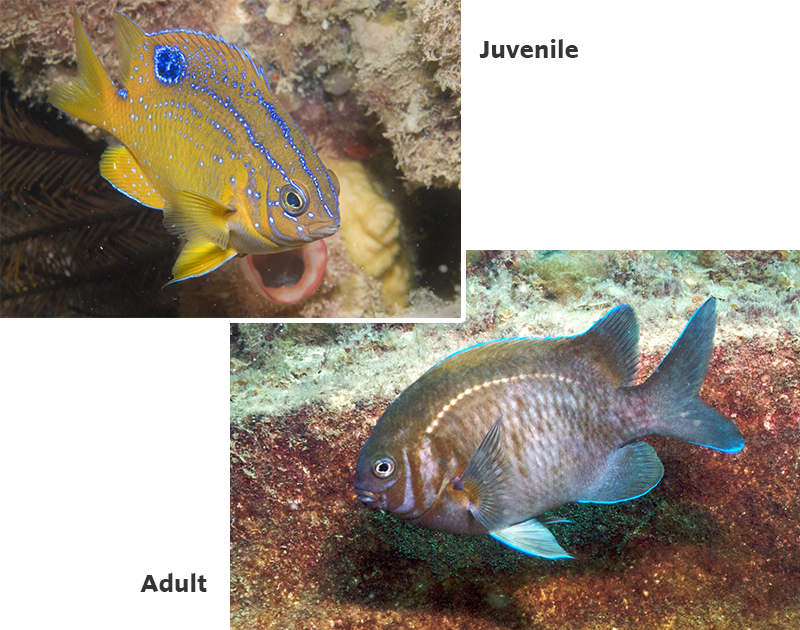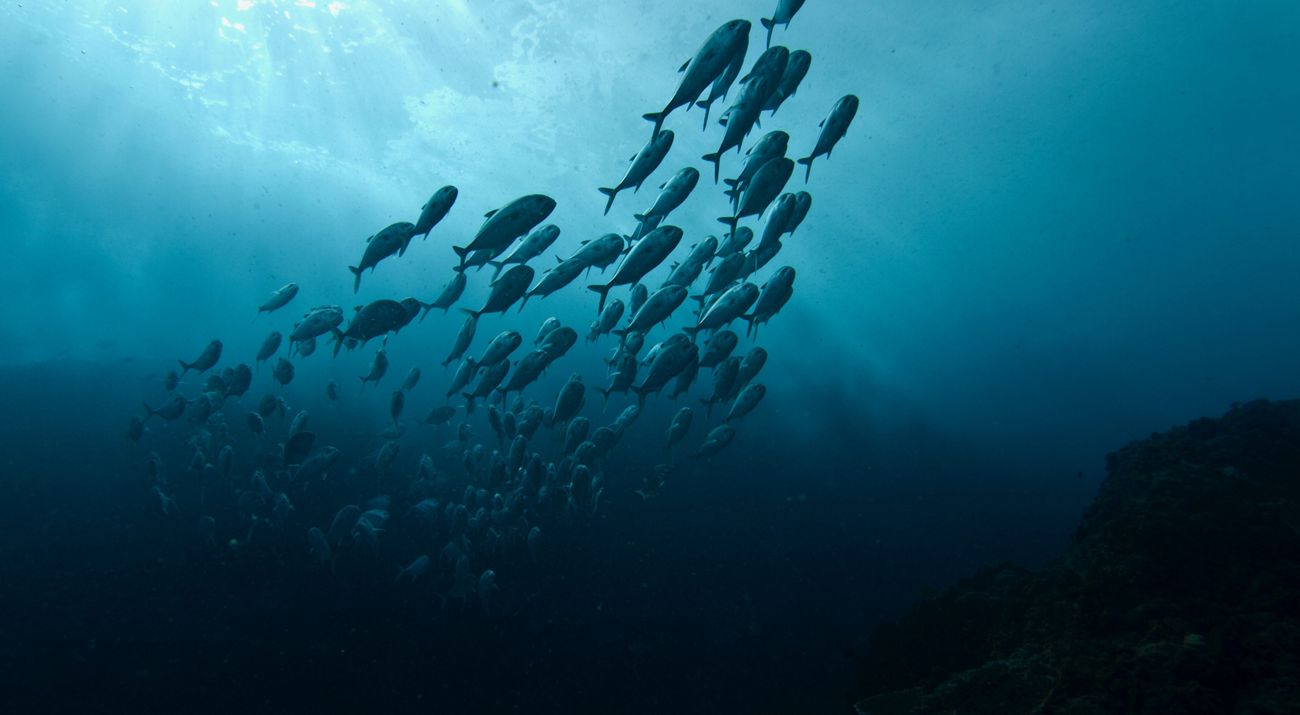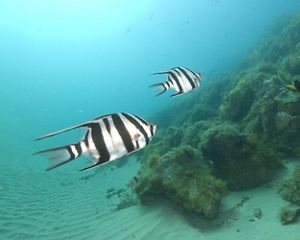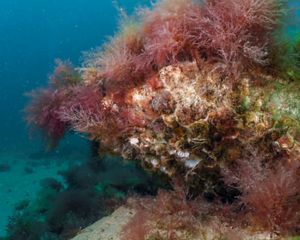A Victorian Scalyfin is often seen on our underwater live Reef Cam. They're very territorial fish and can be seen driving away other fish away and even striking at scuba divers who dare to come near their home. Here's some interesting facts about them.
Scientific name: Parma victoriae. Parma is Latin for “a small shield carried by the infantry and cavalry”.
Other names: Common Scalyfin, Rock Perch, Scaly Fin, Victorian Rock Perch, Victorian Scaly-fin, Victorian Scalyfin
Description: A territorial damselfish only found in southern Australia. It is also one of the largest damselfishes in Australia.
Adults can grow up to 25cm, with little difference in appearance between males and females. Scalyfins change colour as their grow so juveniles have quite different colouring to adults. Juveniles are bright orange with neon-blue lines, spots and a black ocellus ringed with neon-blue on dorsal fin, while adults are dark greyish to black, or rusty-coloured with a dusky head, pale spots along lateral line and sometimes pale below.


Habitat
The Victorian Scalyfin lives in both sheltered and exposed rocky reefs, three to 35 metres below the water’s surface. They are most commonly found in estuaries, bays, and harbours along the southern coast of Australia.
Behaviour
Scalyfins are the ultimate farmers of the sea. They are herbivores, feeding on over 80 different species of red and green algae, which they ‘harvest’ within their home territory. They do have a preference for fleshy red algae, but scalyfins with the largest territories tend to get first pickings of this preferred meal. They like it so much that they will even remove less appetising kelp species from their home territory.
They aggressively defend their well-maintained crop of algae from fellow grazers and have even be found to attack those that come too close, such as leatherjacket fish and even scuba divers. Adult ‘farmland’ territories can range from three to 30 square metres depending on how may neighbouring scalyfin ‘farmers’ are nearby. Scalyfins are so territorial that their aggressive nature may impact the home range of non-territorial species.
Reproduction
Breeding season for the scalyfin starts in November, when breeding pairs form. Males meticulously clear away a patch of rocky reef to create a ‘nest’. They will pick up any interfering critters with their mouth and drop them far away from the nest.
Females lay their eggs onto the nest, after which the males fertilise them and then aggressively protect and aerate the eggs. They may even attack a passer-by if they come too close, including those pesky divers! February marks the end of the breeding season, but the scalyfin’s aggressive nature remains, in order to defend their precious crop of algae.
Conservation
Luckily, there are no major threats to the scalyfin, however coastal development may impact populations. For example, in April 2008, dredging in Port Phillip Bay was likely to have been responsible for localised declines in scalyfin numbers.
Watch Reef Cam
See if you can spot the Victorian Scalyfin that lives amongst the rocks of Pope's Eye.


